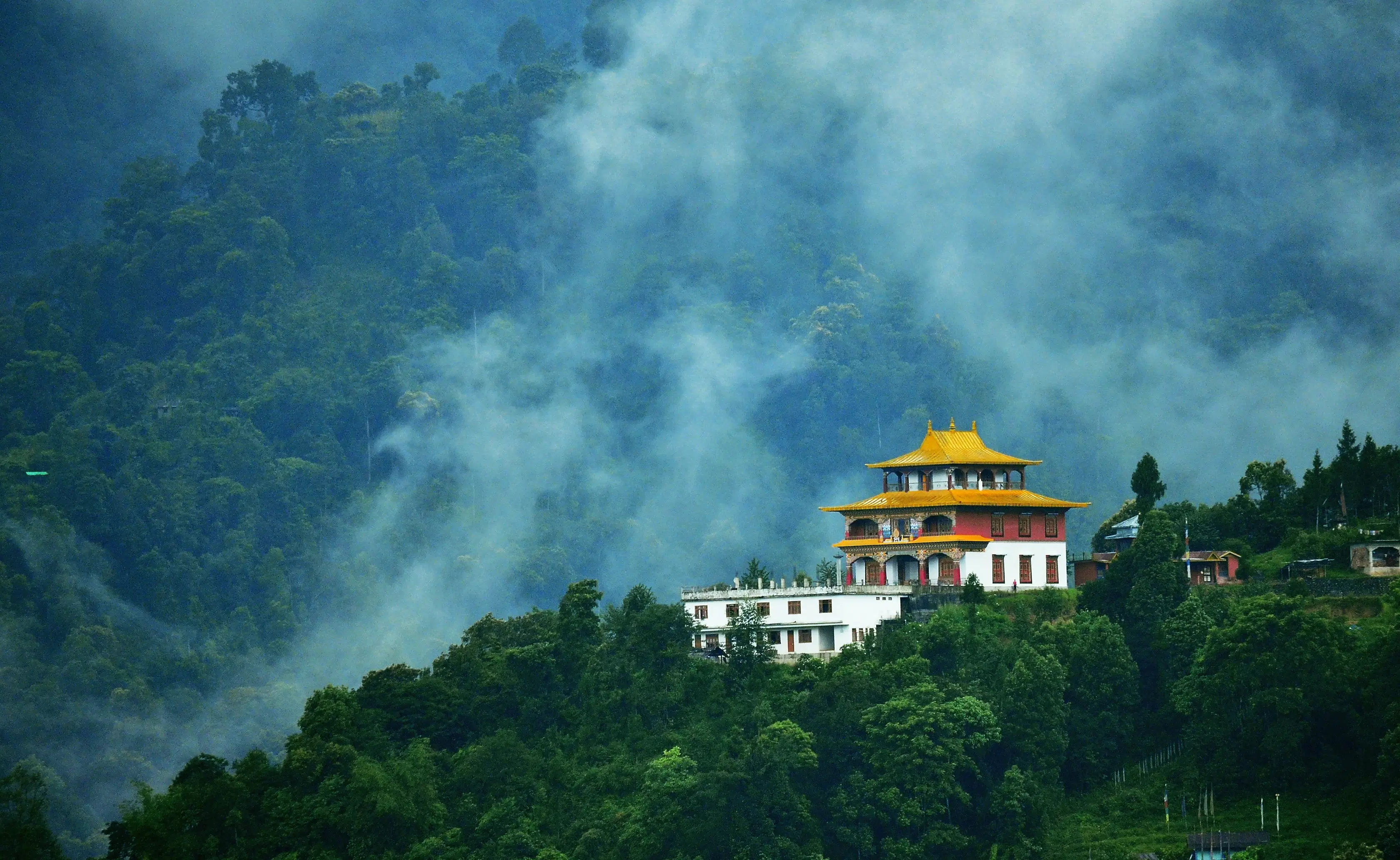
Flights
•04 min read

Deep in the heart of India's sprawling forests, ancient monasteries rise like timeless beacons of tranquility. These peaceful sanctuaries, embraced by nature, offer a serene escape from the chaos of modern urban life. As you journey through these forest monasteries in India, you'll uncover a harmonious blend of spirituality and nature, a unique invitation to delve into centuries-old traditions and discover inner calm.
Forest monasteries have long been integral to India's spiritual and cultural heritage. Rooted in ancient Buddhist traditions, they serve not only as places of worship but also as centers for meditation, learning, and deep spiritual growth. In this blog, you will explore the historical significance of these sacred spaces, gain insights into the serene monastic retreats in Indian forests, and get practical advice on how to visit these mystical retreats that are perfectly designed for those seeking solitude and rejuvenation.
Forest monasteries in India trace their origins back to the early days of Buddhism. Established as sanctuaries away from the hustle of everyday life, these sanctuaries have evolved into revered centers for meditation and spiritual education over the centuries. They offered not just a retreat from worldly distractions, but also nurtured a community dedicated to the pursuit of inner peace and enlightenment.
Unlike urban or hilltop monasteries, forest monasteries are deeply intertwined with nature. Nestled among ancient trees and serene landscapes, they provide a natural setting that enhances contemplation and solitude. Their seclusion appeals to travelers who are in search of spiritual rejuvenation and a renewed connection with nature.
Among the well-known spiritual sanctuaries in India, several forest monasteries stand out due to their rich history and stunning architecture. Hemis Monastery in Ladakh exudes spiritual energy amidst rugged landscapes, while Rumtek Monastery in Sikkim is celebrated for its vibrant cultural legacy. Thiksey Monastery in Leh impresses with its expansive structure and panoramic views, and Phuktal Monastery in Zanskar is carved into mountainsides, merging artistry with natural elements.
Beyond these iconic sites lie hidden monasteries that offer an even deeper sense of seclusion and peace. Tabo Monastery in Spiti Valley, Diskit Monastery in Nubra Valley, and Namdroling Monastery in Coorg are less traveled yet equally soul-stirring. Their remote locations and the whisper of nature enhance the experience, creating an intimate connection between the seeker and the spiritual realm.
Did You Know? Many forest monasteries in India are not just places of worship but also serve as centers for environmental conservation, blending spirituality with ecological mindfulness.

A stay at one of these ancient monasteries offers a well-rounded immersion into monastic life. Visitors can expect a day marked by meditation sessions, communal meals, and insightful teachings. The lifestyle here is simple and minimalistic, encouraging visitors to detach from the material world and focus on inner growth. Whether you are a wanderer seeking a spontaneous spiritual escape or a planner with a structured itinerary, the unique rhythm of monastic life will leave you both reflective and revitalized.
Many forest monasteries welcome visitors for extended stays, offering a rare chance to experience monastic living firsthand. Notable among these are renowned centers such as Rumtek Monastery and Thiksey Monastery, where guests can participate in daily rituals and learn about ancient Buddhist practices. While accommodations are simple, they are designed to foster an environment of peace and reflection. It’s wise to prepare ahead of time and be mindful of the customs observed in these sacred spaces.
The lush environs of forest monasteries heighten the experience of meditation and mindfulness. Being surrounded by vibrant flora and the gentle sounds of nature, one can achieve a deeper state of awareness and inner balance. This natural setting nurtures a profound connection between the spirit and the serene beauty of the earth, making it a perfect venue for those seeking mindful practices.
There is a growing trend towards using forest monasteries as venues for spiritual retreats. Both locals and international visitors are drawn to programs that blend yoga, meditation, and Buddhist teachings in a setting that is at once secluded and inspiring. These retreats offer a transformative experience, encouraging participants to explore inner landscapes as much as the outer beauty of nature.
Visiting forest monasteries is best done during the cooler months when the weather is pleasant and the landscapes reveal their full charm. Many monasteries also celebrate festivals and special events throughout the year, providing an opportunity to witness traditional ceremonies and cultural festivities. Planning your trip during these times not only ensures a comfortable visit but also enhances your understanding of local customs and traditions.

When planning your adventure to these secluded sanctuaries, it is vital to prepare adequately. Research the local transport options, as some monasteries can be reached only by winding mountain roads or trekking paths. Accommodations nearby are often modest, emphasizing the simple life embraced by the monastic community. Always remain respectful of the customs and practices observed in these sacred spaces, ensuring your visit is harmonious with the local traditions.
The Tawang Monastery in Arunachal Pradesh is the largest monastery in India, renowned for its stunning architecture and spiritual significance.
While some monasteries offer free stays, most request donations or nominal fees to cover basic amenities. It’s best to inquire directly with the monastery.
Yes, Thiksey Monastery in Ladakh offers accommodations for visitors, allowing them to experience monastic life firsthand.
The region of Ladakh is often referred to as the "Land of Monasteries" due to its high concentration of Buddhist monasteries.
To join a Buddhist monastery, you typically need to contact the monastery directly, express your interest, and follow their specific guidelines for admission.
Forest monasteries in India offer more than just a spiritual retreat—they provide a journey into the heart of ancient wisdom, merging the beauty of nature with centuries of meditative tradition. This exploration reveals how seamless and enriching a visit to these sacred spaces can be, inviting travelers to experience not only the historic legacy but also the transformative power of inner tranquility.